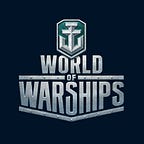The Art of War
Dazzle camouflages — What exactly are they?
You might have seen it in World War I-era photography, warships painted stem to stern with an almost psychedelic hodgepodge of irregular geometric shapes; sharp and jagged lines; and bright, contrasting colors.
What was the purpose of this?
Did ship painters just have unusual artistic flair back then?
Well… Sort of, but not exactly.
The Art of War
It all begins with an Englishman named Norman Wilkinson. A trained artist, he had an ardent passion for all things maritime and enjoyed painting lifelike ships at sea. When World War I broke out, Wilkinson didn´t think twice before signing up to the Royal Navy Volunteer reserve, where he primarily served commanding anti-submarine patrols. This was a privileged position to be in when it came to understanding just how deadly the German U-boats were to the essential transatlantic supply convoys transiting between Britain and America.
Frustrated at the enormous British losses to U-boats, Wilkinson began to ponder: how could his background in painting lifelike seascapes potentially help save lives?
The decade leading up to the start of World War I was in fact rich in artistic movements. Better-quality photography was beginning to make lifelike paintings redundant, so artists began experimenting with abstract methods such as the juxtaposed geometric shapes of Cubism, or the unnaturally vivid colors of post-impressionism. These trends were taking the world by storm, and to Norman Wilkinson, they certainly did not go unnoticed.
“I have a cunning plan, sir…”
In this context, Wilkinson approached the British Admiralty in 1917 with a proposal: he claimed that trying to conceal a large steel ship in the open sea was all but useless. Large profiles, dark plumes of smoke, and long wakes made sure of that. So, what if, instead of trying to conceal their ships from the enemy with camouflage, they tried to confuse them with it?
Wilkinson reasoned that if you covered a ship with a chaotic jumble of vibrant colors and geometric shapes at varying angles, an optical illusion could be created. The intended effect was double:
- Identification: the addition of these lines would conceal the natural features of the ship, such as masts, funnels or decks. These features were used by U-boat crews to identify the exact make of the ship, giving them vital information such as length, top speed, and load capacity.
- Intention: false perspectives, false shadows, and even false bow waves created by the bizarre shapes and colors, all contributed to making it somewhat difficult to gauge which end of the ship was which, or even what direction it was traveling.
As one can imagine, these effects combined would make the life of a German submariner quite difficult when it came to calculating an accurate firing solution for his torpedoes.
The Admiralty quickly took a liking to Wilkinson´s proposal and granted him leadership of a dazzle camouflage development office, where he headed a group of artists in creating thousands of patterns and extensively testing them on small model ships in a makeshift movie set.
As a result, of over 4,000 ships to be painted with a dazzle camouflage by the end of the war, no two of them had the same pattern.
Interesting… But did it work?
Well, it´s difficult to say. After the war, a methodical breakdown of statistics relating to Allied shipping demonstrated that the survivability of dazzled ships was only marginally better than that of normally camouflaged ones. However, crews on dazzled ships tended to feel safer and had higher morale because of it. Though arguably minor, in a time of desperation these effects alone justified its use.
By the time World War II came along, radar technology and targeting computers had diminished the effects of dazzle, and the Royal Navy mostly abandoned the project. However, it still saw sporadic use in the early years of the war by US Navy warships of all types and on light Regia Marina vessels, as well as on heavy ships of the Marine Nationale such as cruiser Gloire and battleship Richelieu. The Kriegsmarine also adopted a minimalist approach to dazzle with its contrasting black-and-white Baltic Strips, famously used on Bismarck and Prinz Eugen.
Originally published on the official World of Warships website.
